The Vault is Slate’s history blog. Like us on Facebook, follow us on Twitter @slatevault, and find us on Tumblr. Find out more about what this space is all about here.
E.A. Séguy, a French artist, created these prints of insects in the 1920s and sold them in pattern books to others who might use them for inspiration in coming up with designs for textiles or wallpaper. Like other work in the Art Nouveau tradition, Séguy’s images look to nature for inspiration, adopting a crowded, colorful aesthetic. Given their strongly geometrical aspect, his insects might also inspire designers working in the newer Art Deco style.
The images were made using pochoir printing, a technique sometimes used in turn-of-the-century France illustration. Ashley Jones, preservation librarian at the Miami University Libraries, writes in a post on Séguy’s work that pochoir was labor-intensive. The idea was to layer stencils on top of one another to create a feeling of depth and texture in a finished print. “While simple in concept, pochoir could become quite complex in practice, with some images requiring the use of 100 or so stencils to produce a single print,” Jones writes. Assembly lines of stencilers applied each layer by hand.
Séguy, writes the proprietor of the blog Bibliodyssey, referred to textbooks while doing his work, trying for accuracy along with beauty. His other natural history–inspired works include prints of crystals (Jones’ post includes some of those images) and butterfiles (viewable, along with the remainder of his insect prints, on the website of North Carolina State University Libraries).
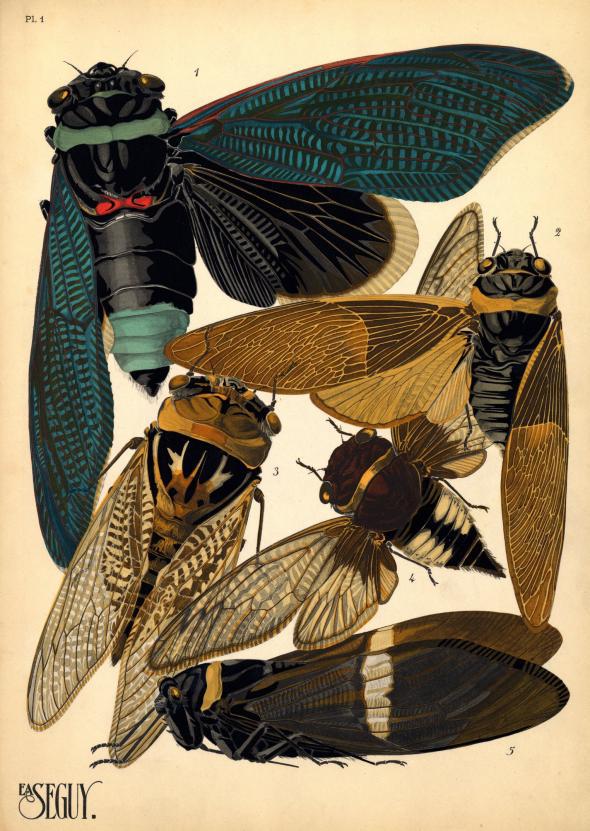
Special Collections Research Center at NC State University Libraries.
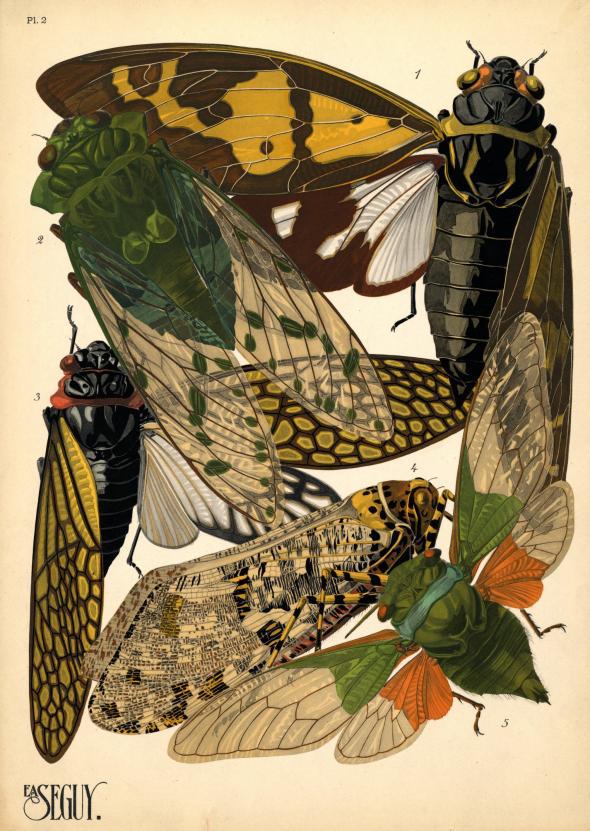
Special Collections Research Center at NC State University Libraries.

Special Collections Research Center at NC State University Libraries.
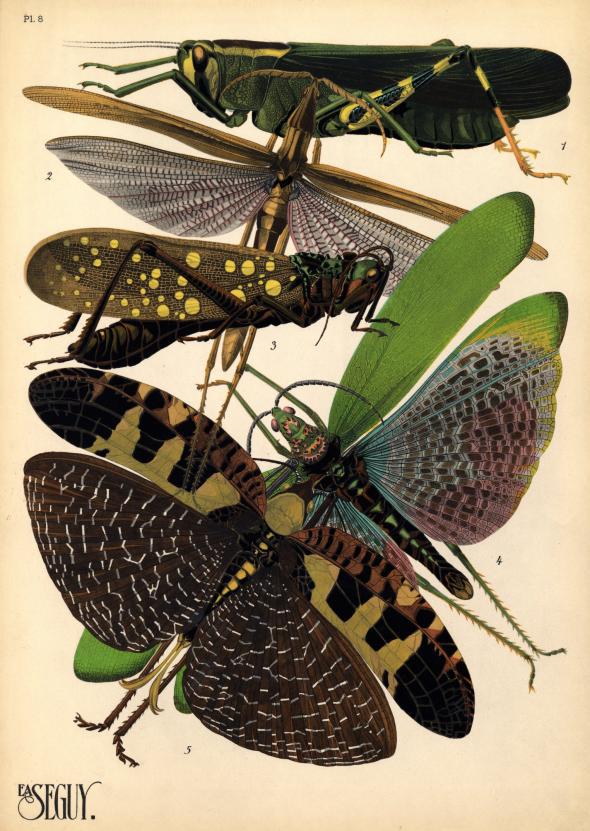
Special Collections Research Center at NC State University Libraries.
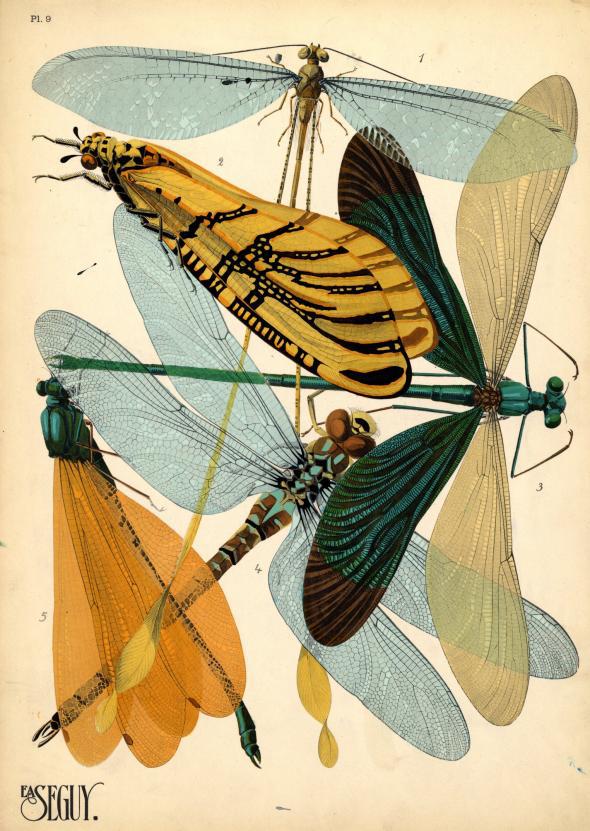
Special Collections Research Center at NC State University Libraries.

Special Collections Research Center at NC State University Libraries.
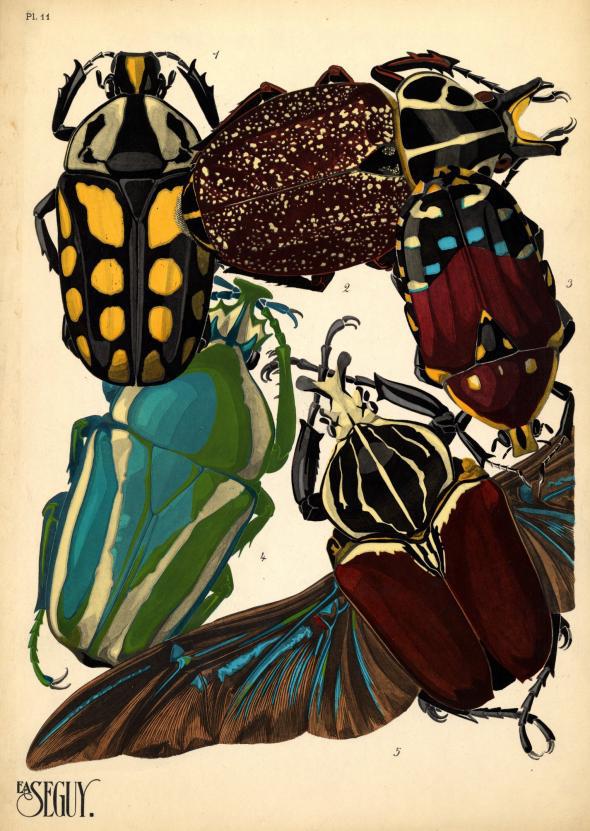
Special Collections Research Center at NC State University Libraries.